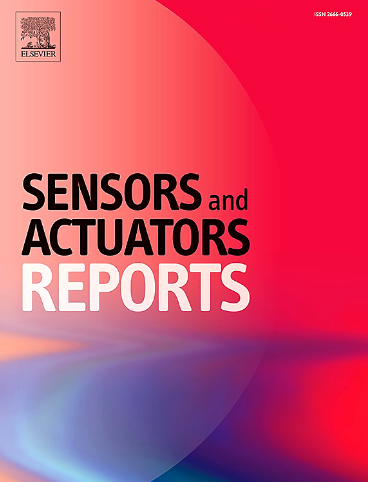Critical review of hydrogen cyanide (HCN) sensors and their applications
IF 6.5
Q1 BIOTECHNOLOGY & APPLIED MICROBIOLOGY
引用次数: 0
Abstract
Hydrogen cyanide (HCN) is a poison gas which can be generated from fuel combustion and conversion from aqueous CN- ions. Approximately 1.1 million metric tons per year of cyanides are utilized by many industries. HCN is also an indicator of air quality, a biomarker for Pseudomonas aeruginosa infection, and a chemical warfare agent. Depending on applications, requirements for HCN sensors significantly vary. In this review, the past and current works on differents HCN gas detection techniques, including optical, mass-based, electrochemical, and chemiresistive sensors, are systematically reviewed. Additionally, it compares various parameters of sensing performance, such as detection range including lower and upper detection limit, sensitivity, selectivity, setup and operation complexity to help the potential users down select the proper type of sensors for their applications. Furthermore, materials computation to discover next generation HCN gas sensing materials is discussed.

氰化氢 (HCN) 传感器及其应用评述
氰化氢(HCN)是一种有毒气体,可由燃料燃烧和水性 CN- 离子转化产生。许多行业每年使用约 110 万公吨氰化物。HCN 还是空气质量指标、铜绿假单胞菌感染的生物标志物和化学战剂。根据应用的不同,对 HCN 传感器的要求也大相径庭。在这篇综述中,系统地回顾了过去和当前不同 HCN 气体检测技术的研究成果,包括光学传感器、质量传感器、电化学传感器和化学电阻传感器。此外,还比较了各种传感性能参数,如检测范围(包括检测下限和上限)、灵敏度、选择性、设置和操作复杂性,以帮助潜在用户选择适合其应用的传感器类型。此外,还讨论了通过材料计算发现下一代 HCN 气体传感材料的问题。
本文章由计算机程序翻译,如有差异,请以英文原文为准。
求助全文
约1分钟内获得全文
求助全文
来源期刊

Sensors and Actuators Reports
Multiple-
CiteScore
9.60
自引率
0.00%
发文量
60
审稿时长
49 days
期刊介绍:
Sensors and Actuators Reports is a peer-reviewed open access journal launched out from the Sensors and Actuators journal family. Sensors and Actuators Reports is dedicated to publishing new and original works in the field of all type of sensors and actuators, including bio-, chemical-, physical-, and nano- sensors and actuators, which demonstrates significant progress beyond the current state of the art. The journal regularly publishes original research papers, reviews, and short communications.
For research papers and short communications, the journal aims to publish the new and original work supported by experimental results and as such purely theoretical works are not accepted.
 求助内容:
求助内容: 应助结果提醒方式:
应助结果提醒方式:


